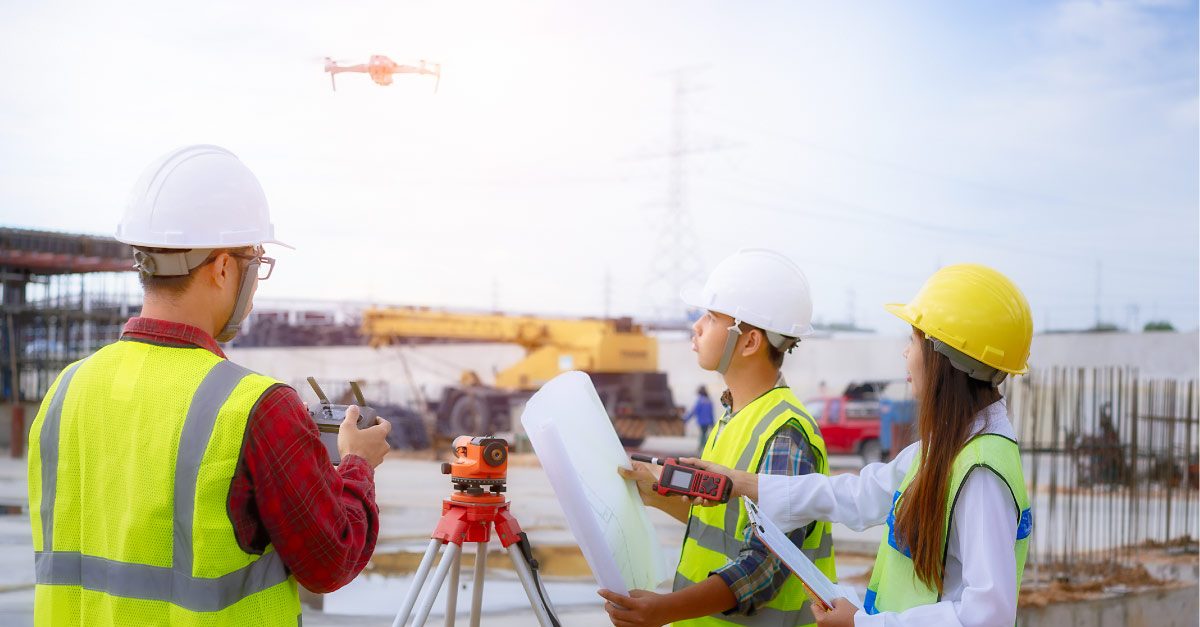Innovations like drones, virtual reality, and worker wearables can provide critical safety solutions
Fatality statistics are driving the adoption of construction safety technology. The most recent construction data from the Occupational Safety and Health Administration (OSHA) and Bureau of Labor is unsettling. Construction worksite fatalities have risen over the last two years, reaching a 12-year high. One in five deaths among all U.S. workers is in the construction industry. Falls at construction sites account for 33% of all worksite deaths. If the sector eliminated falls, it would save more than 300 lives every year.
While construction sites are intrinsically dangerous, these disturbing statistics are persuading a significant number of stakeholders to swiftly embrace cutting-edge technology that will better protect workers, reduce jobsite risk, and make projects more profitable in the long run.
Drones, Virtual Reality, and Worker Wearables are three innovations leading the charge to improve construction site safety.
How is technology helping improve construction site safety?
Drones mitigate risks and save lives
Compared to other sectors, the construction industry has been exceedingly conservative about implementing newer technologies. But in the last five years, McKinsey reports a more than 200% increase in drone adoption at worksites. Additionally, the 2019 U.S. Drone Market Report expects the drone market to quadruple by 2024. Drones have gained traction in the construction sector because they have revolutionized how stakeholders can visualize the site and contractors can see and prevent safety hazards.
Drones are crewless aerial and land vehicles equipped with infrared sensors, thermal sensors, cameras, artificial intelligence software, 3D mapping software, and GPS units. One of the most sophisticated safety robotics available, drones inspect structures, survey sites, and identify potential hazards. In addition, 3D mapping allows project managers and stakeholders on the ground to analyze data against planned data forecasts.
Falls, electric shock, object collision, trench or scaffold collapse, and being caught in or between machinery are some of the most common causes of injury or death on worksites. In many situations, construction workers must climb up scaffolding, enter deteriorated or collapsing buildings, or review structural maintenance for skyscrapers or bridges, all of which present significant safety risks.
Drones mitigate these risks by improving safety inspection and surveying. Drones are more thorough and efficient than human surveyors. For instance, an on-the-ground team would take half a day to examine a worksite that a drone could inspect and map within 15 minutes or less.
Some of the top safety features drones offer are the following:
- Surveying of compromised roofs or unstable structures
- Proper use of heavy equipment at the worksite
- Evaluating building envelopes
Additionally, drones can provide considerable cost savings for clients, developers, and owners. For instance, E Construction estimates that using drones saves over $50,000 a year in costs related to inventory and surveillance.
Virtual Reality supports high-caliber safety training
Virtual Reality (VR) offers 3D precision and models that recreate complex situations to help train employees. “Practice makes perfect” is the mantra for all types of learning, but it holds especially true when a visual model provides a simulated environment without any intrinsic danger. It allows construction workers to walk through real-life circumstances and test tactics without harm.
VR construction safety training delivers a risk-free, immersive, interactive, accurate, multi-user environment to allow workers to hone their skills. Skills could include turning tight corners and avoiding hazardous materials. The “game” or “multi-user” aspect is attractive to employees who have experience with gaming. The competitive element will aid in both learning retention and team building within the safety training modules. VR training, which typically includes emergency procedures, also is easier to track and monitor over time. By training within a virtual environment, unnecessary risks and operational bottlenecks are removed.
Wearables help protect workers
One of the most exciting new safety devices in the construction segment is wearables. Since smartwatches and fitness tractors are commonplace on the consumer side, it is easy for construction firms to embrace these technologies. Some of the considerable ingenuity in wearables include exoskeletons that give workers superhero strength, smart safety glasses or shoes with Wi-Fi access, and helmets that reduce worker fatigue.
Hard hats are synonymous with construction sites, and new features will make them even more indispensable. By adding a sensor around the inside rim, this new hard hat technology can detect worker fatigue, falls, and no-go entries. For example, SmartCap uses electroencephalography (EEG) technology to measure an employee’s fatigue level so breaks can be taken when needed and worksite microsleeps (sudden moments of sleep that occur in fatigued individuals) can be avoided.
Another headwear technology company, WakeCap, uses real-time location systems (RTLS) technology to geo track employees to gain an in-depth understanding of all worksite activity. This tracking prevents congestion, helps heavy equipment handlers avoid potential collisions, sends alerts if someone enters a no-go or dangerous zone, and enhances overall workflow.
The construction industry is considered to be one of the most dangerous to work in, and the sector will continue to face safety challenges. Yet, innovative construction safety technology including drones, virtual reality, and worker wearables can provide critical safety solutions to improve construction site safety and worker safety.
Related reading: 3 Top Construction Technology Trends




